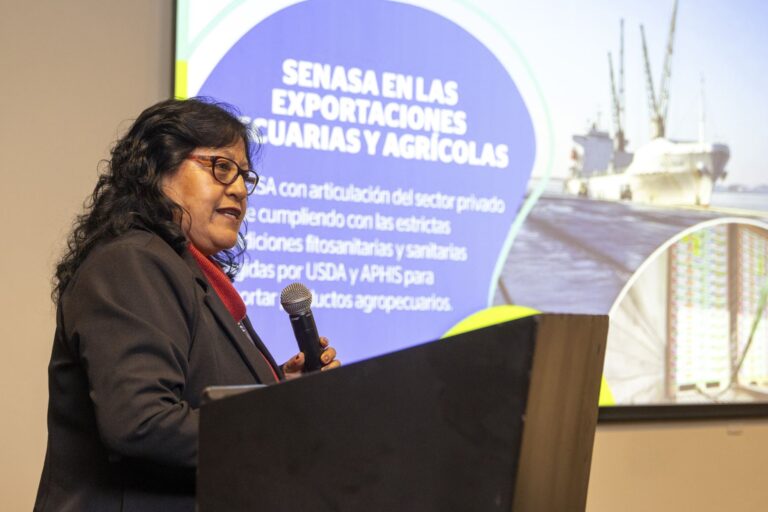Por Miguel De la Vega Polanco
The Free Trade Agreement (FTA), signed between Peru and the United States in April 2006 and which entered into force three years later, in 2009, boosted bilateral trade, especially Peruvian agricultural exports to the vast US market.
In 2024 Peru exported US$ 1.22 billion in fresh blueberries, US$ 867 million in fresh grapes, US$ 275 million in fresh asparagus, and US$ 163 million in fresh avocados to the United States, which are impressive figures.
Likewise, there are talks to introduce several Peruvian agricultural products to the North American market, such as cape gooseberry, pitahaya, and turmeric, among others.
“Our country has great potential because of the microclimates we have along the coast, mountains, and jungle; so we are a country that can produce much more to supply the United States and the entire world,” Vilma Gutarra García, head of Peru’s National Agrarian Health Service (SENASA), told the official newspaper El Peruano.
She also noted that the Andean region, where most of the country’s family farming is located, has the potential to export more to the United States and other countries.
“The Andean region has the potential and already exports. Huancavelica, Ayacucho, Apurímac, Cusco, and the Apurímac, Ene, and Mantaro River Valleys (VRAEM) export avocados to the United States; they are small producers,” she emphasized.
She made this statement after participating in the US Ports and Agrifoodtrade seminar, organized by Trade Training, where the current situation of agricultural exports to the United States, their challenges, and prospects were analyzed.
The head of SENASA indicated that cape gooseberry is a product close to entering the United States because it has already completed the risk analysis, which is a technical stage for establishing phytosanitary requirements.
“Cape gooseberry would become the blueberry of the mountains, so to speak, but that doesn’t mean it can’t be produced on the coast. It could be entering the United States in the first half of next year,” she indicated.
In this regard, the head of SENASA recommended small producers work through associations to obtain better technical and financial support to boost their development.
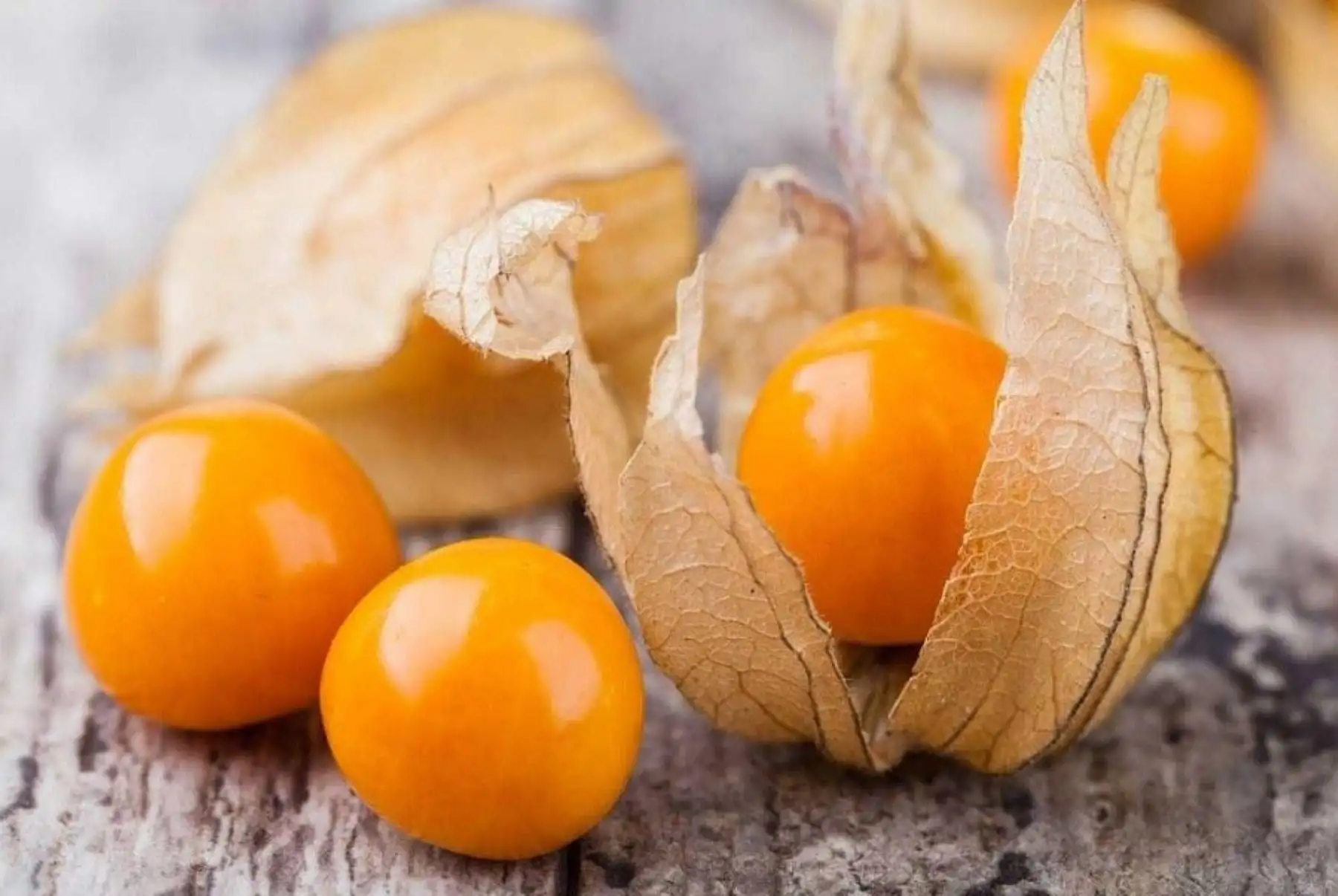
“With small producers, associations are important; when they are associated, everything arrives better: resources, technical assistance, it’s better than going from house to house or plot to plot. The best example is small avocado producers, who with plots of land of half a hectare to one hectare are already involved in international trade,” she explained.
Export chains
For his part, Gabriel Amaro, president of the Association of Agricultural Producers of Peru (AGAP), also highlighted the potential of small producers in the Andean region to reach the United States market.
“The majority of small farmers are in the mountains; about 60% of all economic activity in rural areas is agriculture. There are already several chains developing and incorporated into modern agriculture,” he said.
“For example, ginger, which is mostly produced in Junín, and much of it goes to the United States and other countries, but blueberries are also already produced in the Andean region,” he added.
Amaro noted that of the seven most important agricultural export chains, more than 85% are made up of small-scale farmers, and there are even chains such as those of cocoa and coffee, where more than 90% comes from family farming.
In this regard, he emphasized that Peru’s new Agrarian Law, enacted in August of this year, will contribute to the growth of agricultural exports and small farmers.
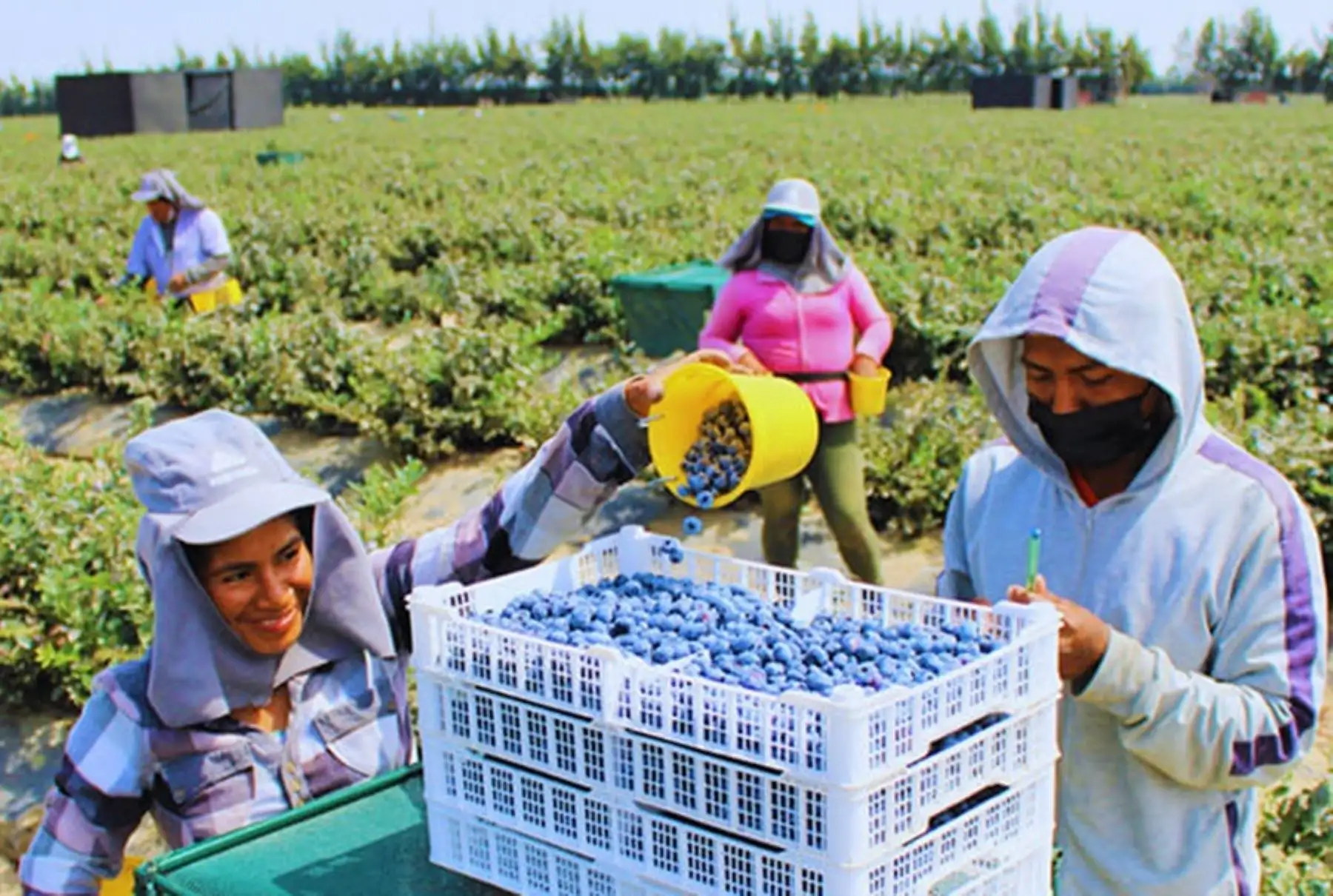
Tariffs
On the other hand, Amaro commented that the recent application of 10% tariffs on Peruvian products entering the United States affects all national agricultural exports because the importer passes on the increased cost to the Peruvian producer; therefore, the profit margin for Peruvian exporters is reduced.
“Therefore, it is important work that we must do with the authorities to gain competitiveness and have negotiations that can reduce tariffs to zero and enforce the Free Trade Agreement (FTA) we have with the United States,” he said.
Key Trading Partner
For his part, Jaime Garcia Diaz, director of the Lima Chamber of Commerce (CCL), highlighted the trade relationship between Peru and the United States.
“This relationship is a fundamental pillar for the Peruvian economy and is cemented by the Free Trade Agreement, which was signed in 2006 and entered into full force in 2009,” he emphasized.
He stated that trade between the two countries, which reached US$ 7.5 billion in 2005 increased to US$ 19.5 billion in 2024.
“That is, it grew by approximately 80%,” he emphasized.
He also highlighted that between 2005 and 2024, Peruvian exports to the United States increased from US$ 5.3 billion to US$ 9.5 billion.
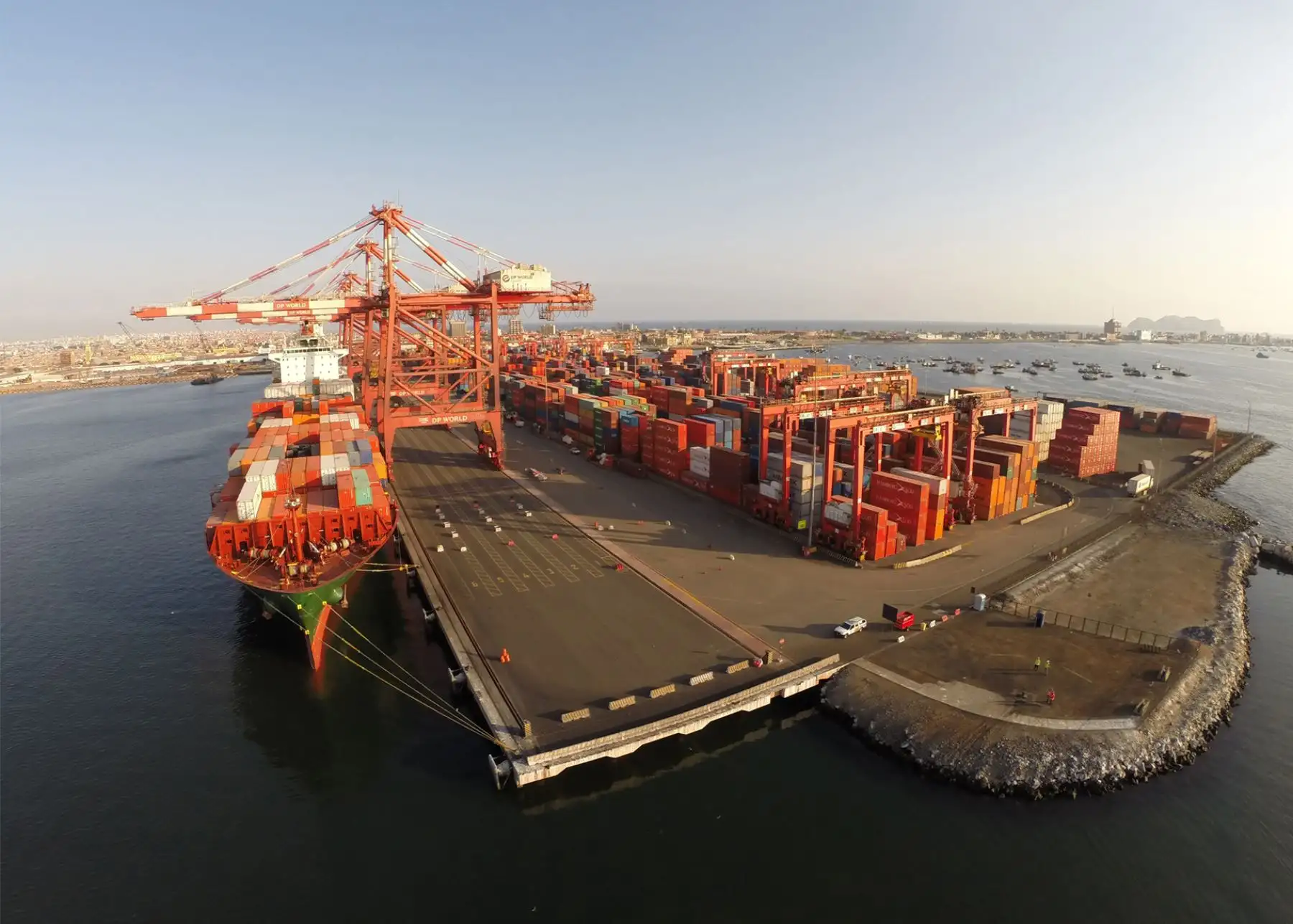
Growth
The head of AGAP stated that Peru’s total agricultural exports will exceed US$ 13.5 billion, but considered it “very likely” that they will approach US$ 14 billion by the end of 2025.
He also highlighted the goal of doubling agricultural exports in 10 years, eventually reaching US$ 50 billion.
He also highlighted that Peru has led the growth of fruit and vegetable exports to the United States in Latin America over the last five years, with a 14% increase, surpassing Mexico (8%), Costa Rica (7%), Guatemala (6%), and Chile (5%).
Given this encouraging outlook, representatives from U.S. port terminals such as Karin Mickenhagen of Georgia Ports; Aaron Brott of North Carolina Ports; and Dominic O’Brien of The Port of Philadelphia visited Peru.
Also Robert Barcelo of Port Everglades; Sonless Martin of Port Miami; and Ricardo Arias of the Port of Houston; all of them interested in the development of Peruvian agricultural exports and their marketing to U.S. markets.
The Director of Trade Training, Melina Domínguez, highlighted the importance of strengthening the agricultural export chain by more efficiently connecting Peruvian products with the U.S. market.
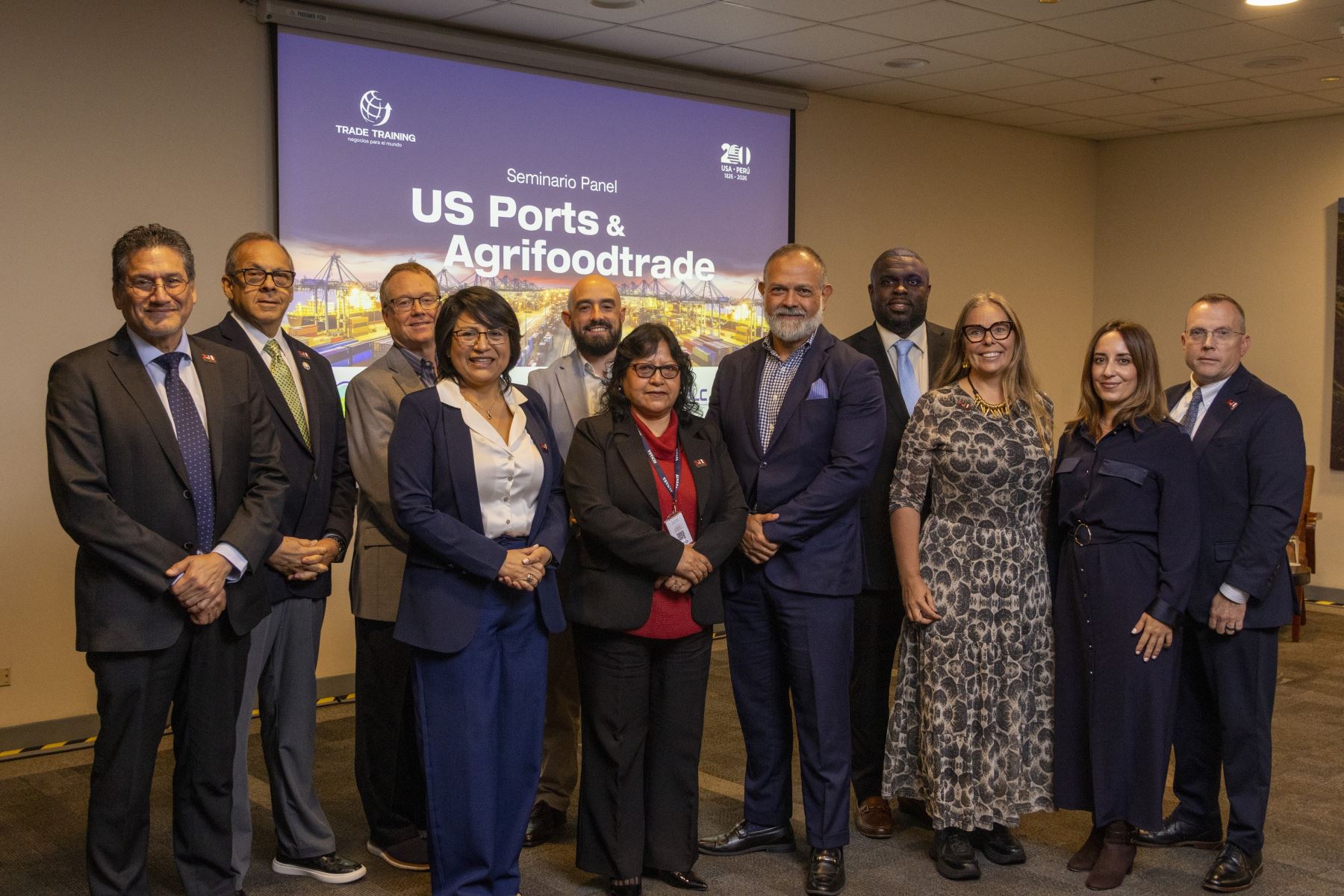
Portfolio
Gabriel Amaro highlighted the portfolio of 23 irrigation projects launched by the government for the entire Peruvian coast from Tumbes to Tacna, which will allow for the incorporation of approximately 1.4 million new hectares for modern agriculture.
“To give an idea of the impact, for example, La Libertad is currently competing for the top spots in agro-exporting regions, along with Ica region. La Libertad region with its Chavimochic project in its first and second stages produces 30,000 hectares of modern agricultural land,” Amaro said.
“Well, the third stage of Chavimochic will incorporate approximately 100,000 more hectares, three times more than what we already have. Therefore, the size of modern agricultural production in La Libertad will quadruple,” he emphasized.
“This means that not only will new crops be planted, but also that four times the country’s port capacity will be needed, four times the land transportation capacity, more than four times the need for technical and professional personnel, and more than four times the cargo capacity of ships and containers,” Amaro said.
He also noted that the development of the 23 irrigation projects, which are being accelerated to be put on track by the next administration, will enable Peru, with the new legal framework of the Agrarian Law, to experience “exponential growth” in agricultural exports and the national economy.
(END) MDV / MDV
More in Andina:
#AndinaEnglish Peru launches the first commercial promotion campaign for its avocado in China?? pic.twitter.com/gUxL4Djfvh
— Agencia Andina (@Agencia_Andina) October 22, 2025
Publicado: 24/10/2025
Images are for reference only.Images and contents gathered automatic from google or 3rd party sources.All rights on the images and contents are with their legal original owners.

